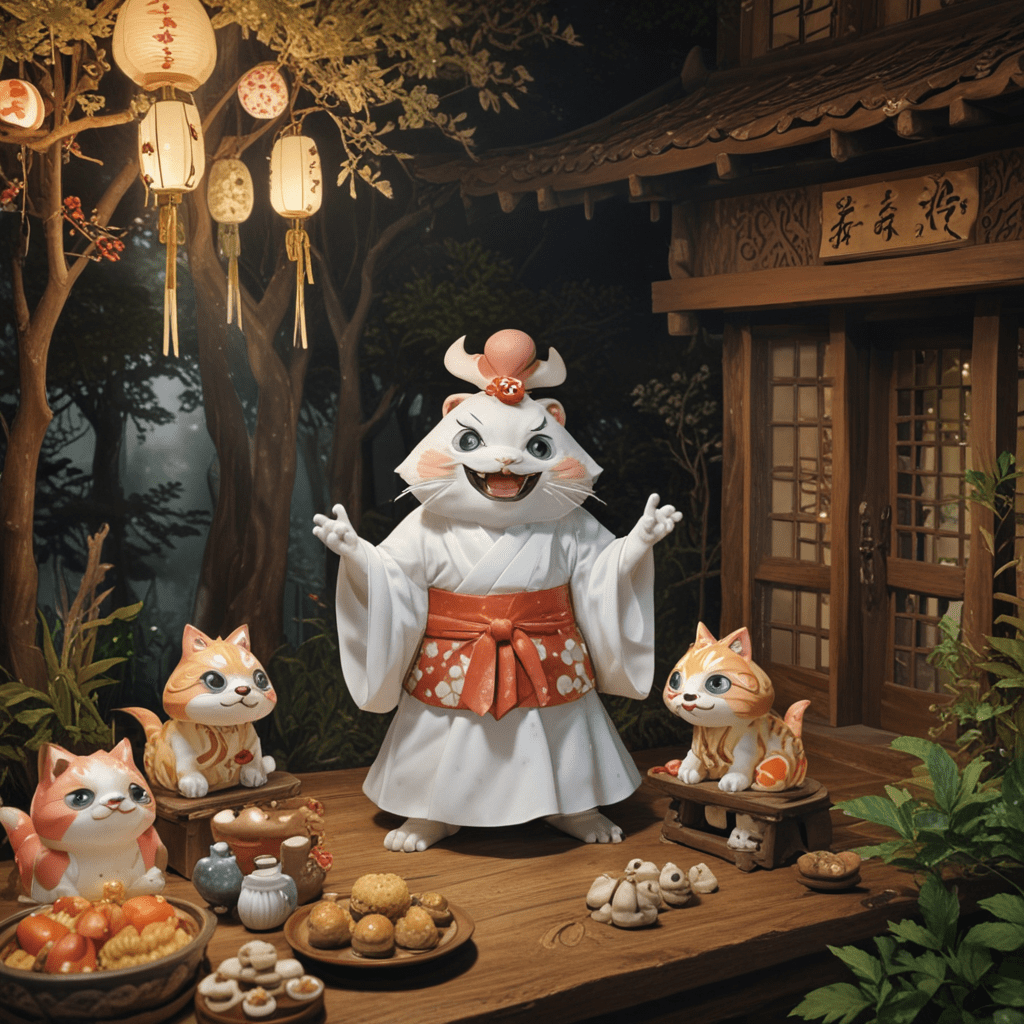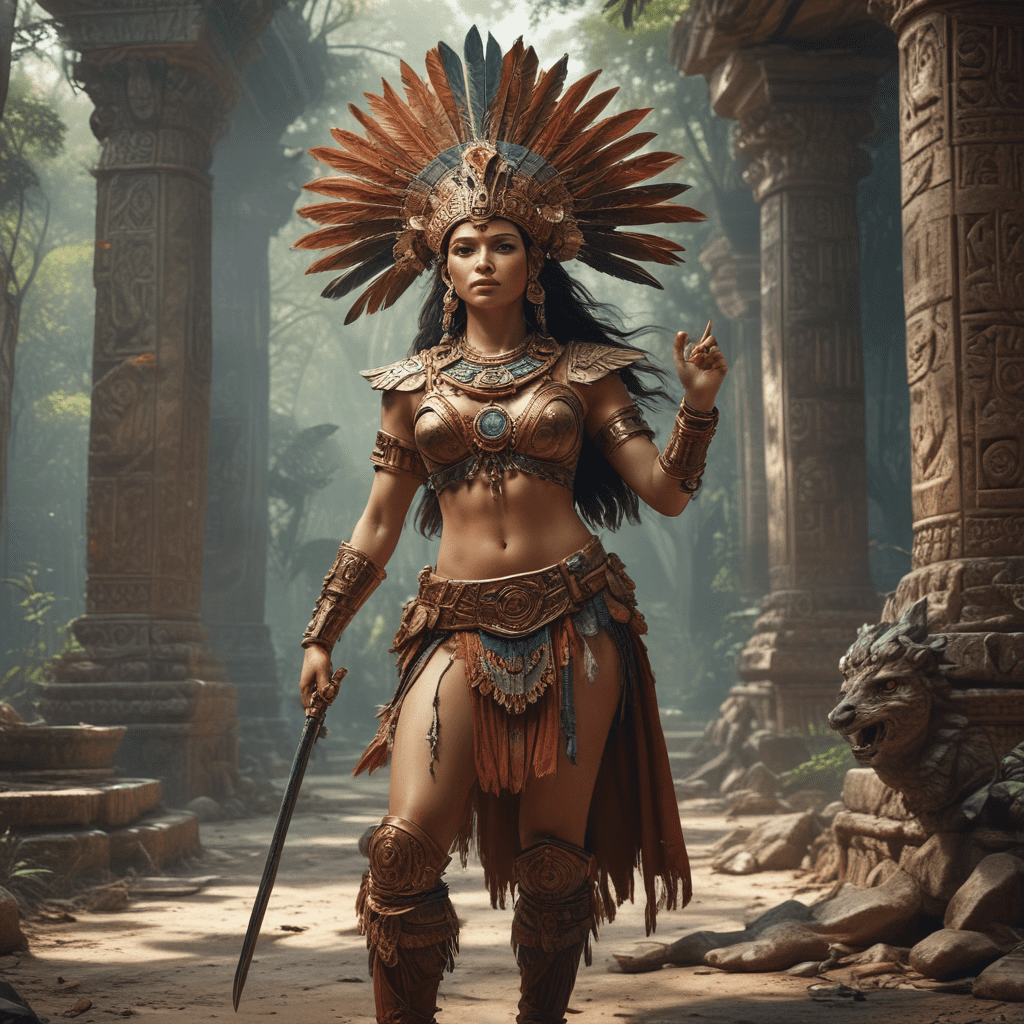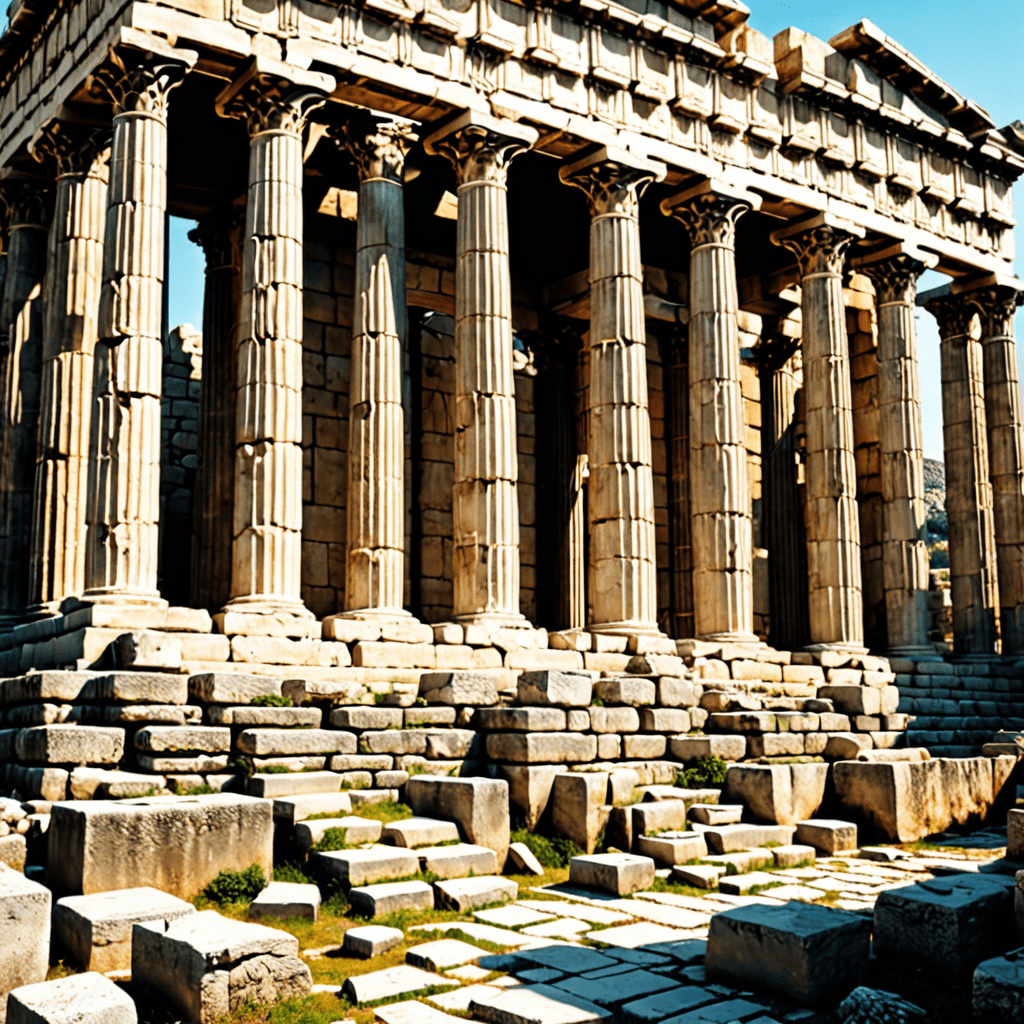The Tale of the Tannuki-bake: The Bake-danuki in Japanese Yokai Stories
I. Introduction
Yokai are a captivating part of Japanese folklore, enchanting the imaginations of people for centuries. Among them, the bake-danuki stands out as a mischievous and enigmatic figure. As a quintessential yokai, the bake-danuki embodies the supernatural realm and its interplay with human lives.
II. The Bake-danuki's Physical Characteristics
The bake-danuki possesses an extraordinary ability to shapeshift, taking on various forms, including humans, animals, and even inanimate objects. Its size and appearance can vary greatly, ranging from small, raccoon-like creatures to massive, lumbering beasts. Despite its malleable nature, the bake-danuki is often depicted with large eyes, a long snout, and a fluffy tail.
III. The Bake-danuki's Mythological Origins
The bake-danuki's origins are rooted in Japanese animism, the belief that all things possess a spirit. According to legend, the bake-danuki emerged as a manifestation of the spirit dwelling in badgers. Over time, these badger spirits evolved into the cunning and mischievous yokai known as the bake-danuki.
IV. The Bake-danuki's Powers and Abilities
The bake-danuki wields a formidable array of powers. It is a master of illusions, capable of creating elaborate tricks and transforming the world around it. Additionally, the bake-danuki possesses the ability to possess humans, controlling their minds and actions.
V. The Bake-danuki's Interactions with Humans
The bake-danuki's interactions with humans range from harmless pranks to malevolent acts. It delights in playing tricks on unsuspecting victims, often leading them astray or bewildering them with illusions. However, the bake-danuki is also known to exhibit benevolent traits, aiding humans in need or rewarding those who show it kindness.
VI. The Bake-danuki in Japanese Culture
The bake-danuki has become deeply ingrained in Japanese culture, finding its way into art, literature, theatre, and festivals. Woodblock prints and paintings depict the yokai in various scenes, capturing its playful nature and its interactions with humans. In literature, the bake-danuki is a recurring character in folk tales and legends, often serving as a trickster or a symbol of supernatural mischief. Theatre productions, such as Noh and Kabuki, also feature the bake-danuki as a central figure, showcasing its shape-shifting abilities and its mysterious allure.
VII. Variations on the Bake-danuki
Throughout Japan, different regions boast unique variations on the bake-danuki. In some areas, it is believed to have a mischievous habit of drumming, while in others, it is said to possess the ability to speak human language. The Shikoku region is home to the Koma-inu-danuki, a variant with the head of a lion, while the Noto Peninsula features the Sagi-danuki, which takes the form of a heron. These regional variations add to the diversity and charm of the bake-danuki legend.
VIII. Modern Interpretations of the Bake-danuki
In contemporary Japan, the bake-danuki continues to captivate the public imagination, appearing in popular culture and inspiring numerous adaptations. It has become a beloved character in anime, manga, and video games, often depicted as a mischievous yet endearing creature. Artists and designers draw inspiration from the bake-danuki's unique characteristics, incorporating its image into contemporary art and design. These modern interpretations ensure the enduring legacy of the bake-danuki in Japanese culture.
IX. Symbolism and Significance of the Bake-danuki
The bake-danuki holds profound symbolic significance, reflecting human nature and the supernatural. It represents the duality of good and evil, embodying both playful humor and malicious intent. Its shape-shifting abilities symbolize the fluidity of reality and the enigmatic nature of the yokai world. The bake-danuki challenges conventional boundaries, reminding us of the hidden forces that exist beyond human understanding.
X. Conclusion
The bake-danuki is an enchanting and enduring figure of Japanese folklore, embodying the playful and mysterious aspects of the supernatural realm. Its shape-shifting abilities, mischievous nature, and profound symbolism have captured the imaginations of generations. From its ancient origins to its modern-day interpretations, the bake-danuki continues to fascinate and inspire, reminding us of the rich tapestry of Japanese culture and the enduring power of yokai legends.
FAQ
Q: Are bake-danuki real?
A: Bake-danuki are mythological creatures and do not exist in the physical world as described in folklore.
Q: What is the difference between a tanuki and a bake-danuki?
A: A tanuki is a real animal, the Japanese raccoon dog, while a bake-danuki is a yokai, a supernatural creature that can shapeshift into the form of a tanuki.
Q: Why are bake-danuki often depicted with large testicles?
A: In Japanese folklore, large testicles are associated with vitality and virility. Bake-danuki are often depicted with exaggerated testicles to emphasize their mischievous and playful nature.
Q: Are bake-danuki always harmful?
A: No, bake-danuki can be both mischievous and benevolent. While they are known for their pranks and tricks, they have also been known to aid humans in need or reward those who show them kindness.



